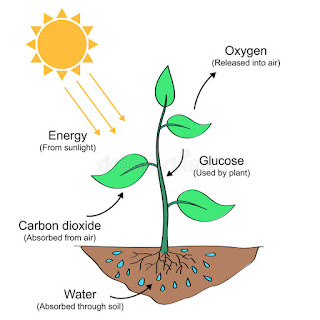Short note on Photosynthesis

Photosynthesis On earth, every organism needs food for its survival. Some animals eat plants as a source of food and some animals eat another organism as food. Similarly, plants also need food for their survival and they make their food on their own by taking sunlight as a source of energy and convert it into chemical energy. This process is called Photosynthesis . The word Photosynthesis is generally divided into two parts photo - light and synthesis - to make. Things Need For Photosynthesis - For the photosynthesis reaction to occur there are generally three things to be needed - Water Carbon Di Oxide Oxygen Process Of Photosynthesis - The process of photosynthesis generally happens in the leaves of the plant. The leaves of the plant contain chlorophyll in their cells which have one crucial pigment called Chloroplast . This Chloroplast is responsible for giving green color to the leaves of the plant. The process of plant photosynthesis is generally divi...